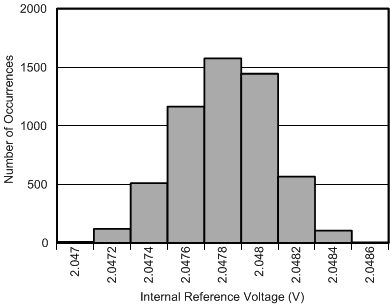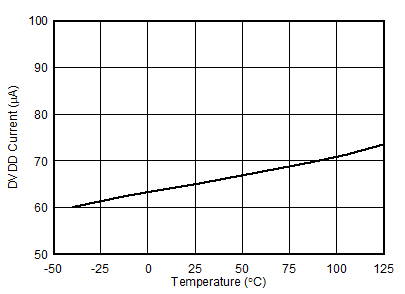ZHCSHD5A January 2018 – October 2018 ADS112U04
PRODUCTION DATA.
- 1 特性
- 2 应用
- 3 说明
- 4 修订历史记录
- 5 Pin Configuration and Functions
- 6 Specifications
- 7 Parameter Measurement Information
-
8 Detailed Description
- 8.1 Overview
- 8.2 Functional Block Diagram
- 8.3
Feature Description
- 8.3.1 Multiplexer
- 8.3.2 Low-Noise Programmable Gain Stage
- 8.3.3 Voltage Reference
- 8.3.4 Modulator and Internal Oscillator
- 8.3.5 Digital Filter
- 8.3.6 Conversion Times
- 8.3.7 Excitation Current Sources
- 8.3.8 Sensor Detection
- 8.3.9 System Monitor
- 8.3.10 Temperature Sensor
- 8.3.11 Offset Calibration
- 8.3.12 Conversion Data Counter
- 8.3.13 Data Integrity
- 8.3.14 General-Purpose Digital Inputs/Outputs
- 8.4 Device Functional Modes
- 8.5 Programming
- 8.6
Register Map
- 8.6.1 Configuration Registers
- 8.6.2
Register Descriptions
- 8.6.2.1 Configuration Register 0 (address = 00h) [reset = 00h]
- 8.6.2.2 Configuration Register 1 (address = 01h) [reset = 00h]
- 8.6.2.3 Configuration Register 2 (address = 02h) [reset = 00h]
- 8.6.2.4 Configuration Register 3 (address = 03h) [reset = 00h]
- 8.6.2.5 Configuration Register 4 (address = 04h) [reset = 00h]
- 9 Application and Implementation
- 10Power Supply Recommendations
- 11Layout
- 12器件和文档支持
- 13机械、封装和可订购信息
6.8 Typical Characteristics
at TA = 25°C, AVDD = 3.3 V, and AVSS = 0 V using internal VREF = 2.048 V (unless otherwise noted)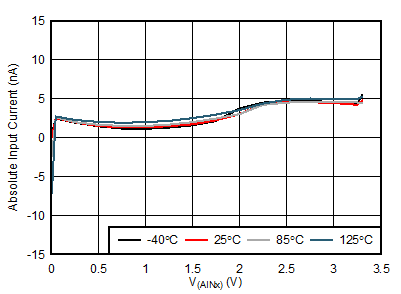
| Normal mode, PGA disabled, VIN = 0 V |
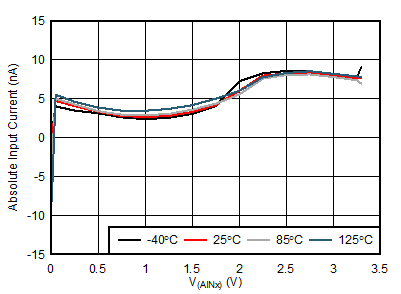
| Turbo mode, PGA disabled, VIN = 0 V |
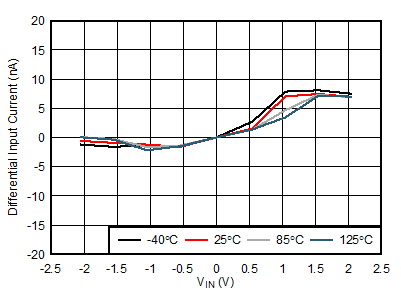
| Normal mode, PGA disabled, VCM = 1.65 V |
Differential Input Voltage
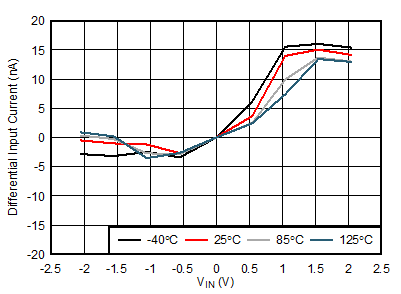
| Turbo mode, PGA disabled, VCM = 1.65 V |
Differential Input Voltage
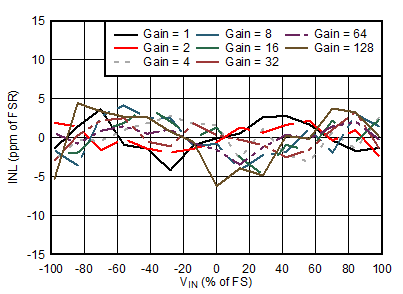
| PGA enabled, external reference, best fit |
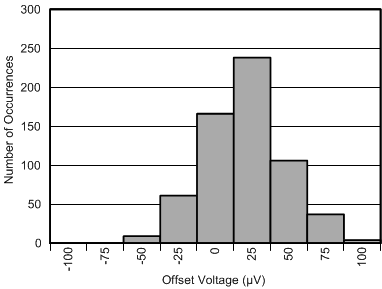
| PGA enabled, gain = 1, 620 samples |
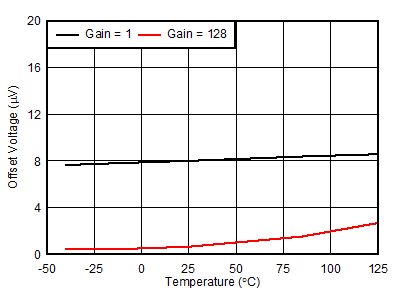
| PGA enabled | ||
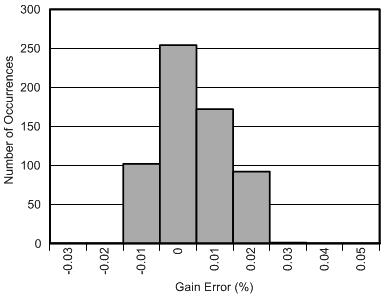
| PGA enabled, gain = 1, 620 samples |
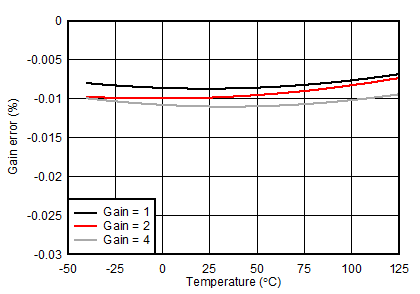
| PGA disabled |
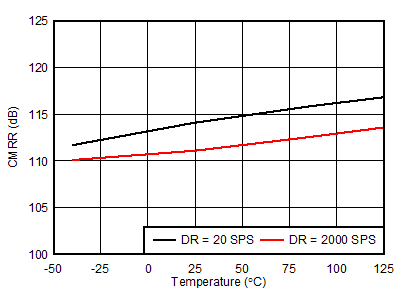
| PGA disabled |
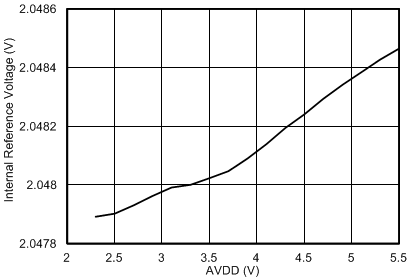
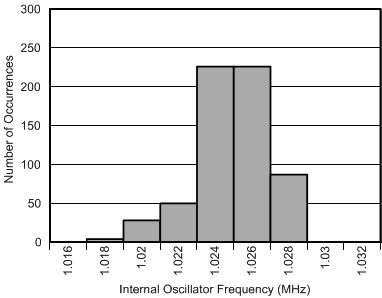
| Normal mode |
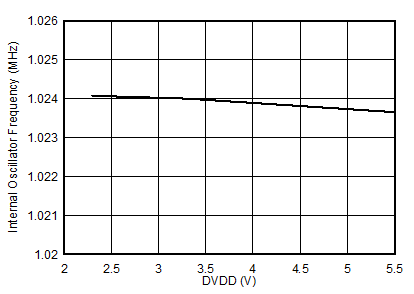
| Normal mode |
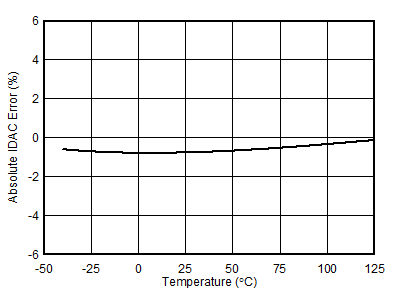
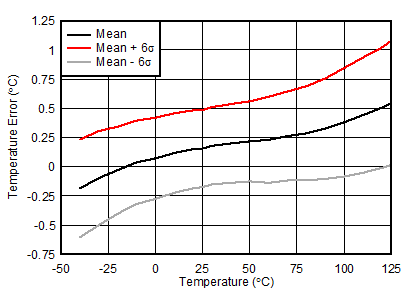
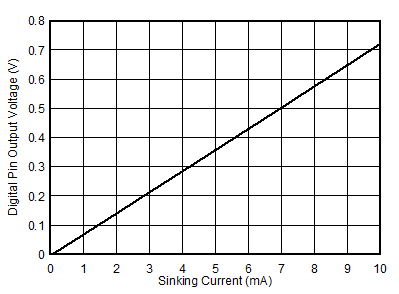
| DVDD = 3.3 V |
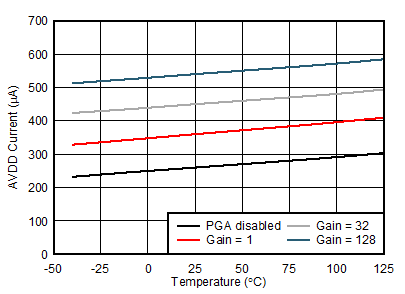
| Normal mode |
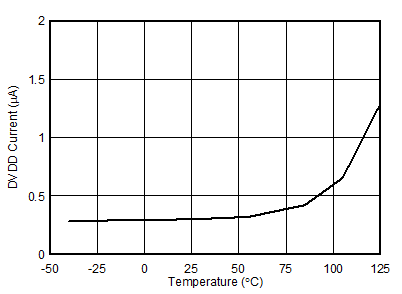
| Power-down mode |
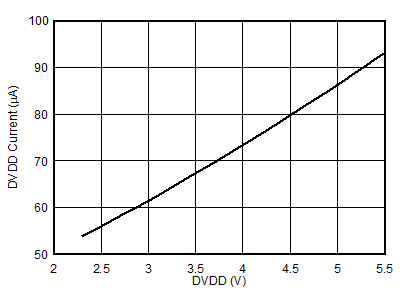
| Normal mode |
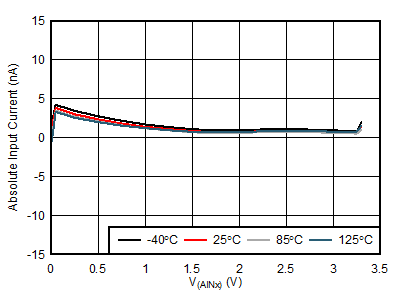
| Normal mode, PGA enabled, VIN = 0 V |
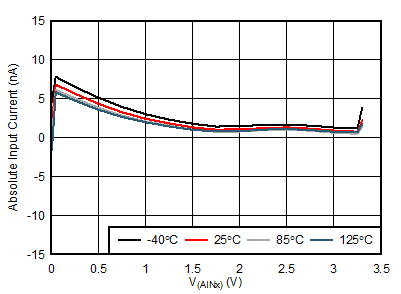
| Turbo mode, PGA enabled, VIN = 0 V |
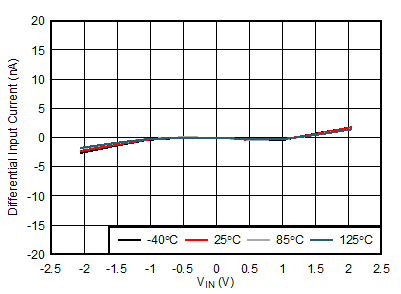
| Normal mode, PGA enabled, VCM = 1.65 V |
Differential Input Voltage
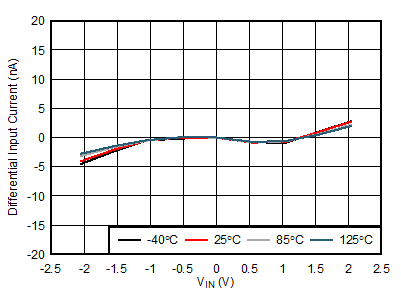
| Turbo mode, PGA enabled, VCM = 1.65 V |
Differential Input Voltage
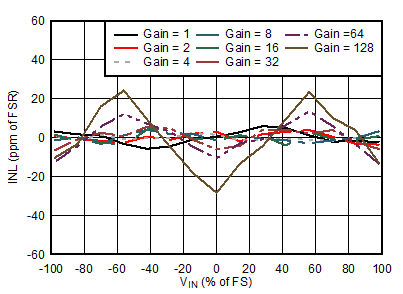
| PGA enabled, internal reference, best fit |
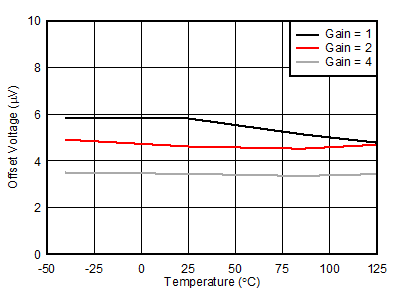
| PGA disabled |
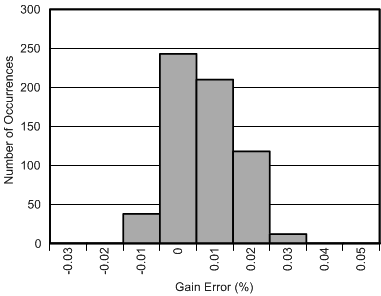
| PGA disabled, gain = 1, 620 samples |
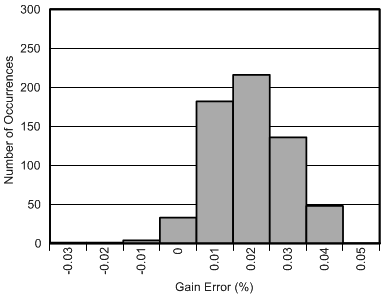
| PGA enabled, gain = 128, 620 samples |
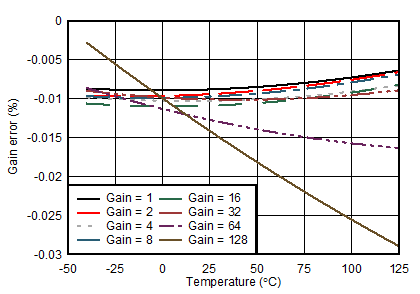
| PGA enabled |
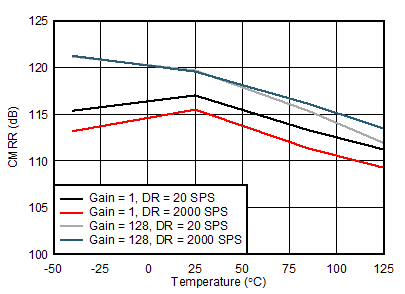
| PGA enabled |
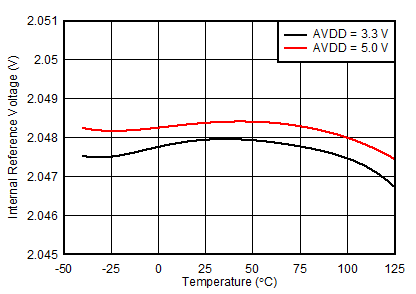
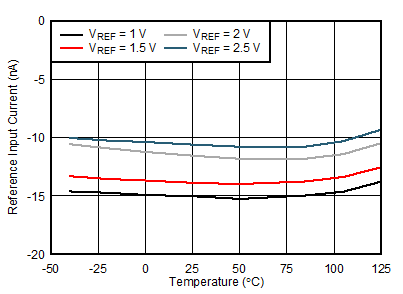
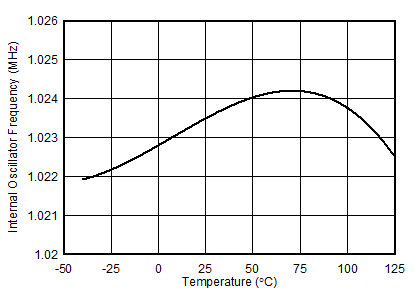
| Normal mode | ||
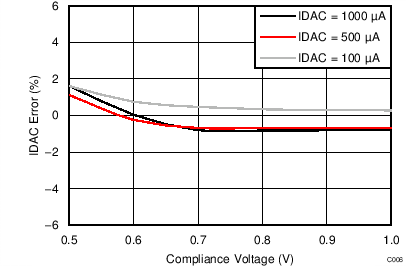
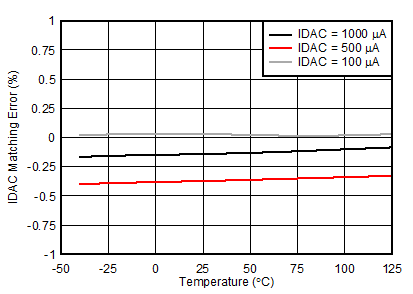
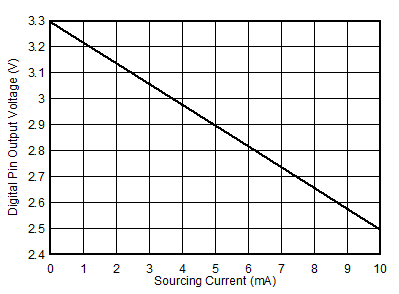
| DVDD = 3.3 V |
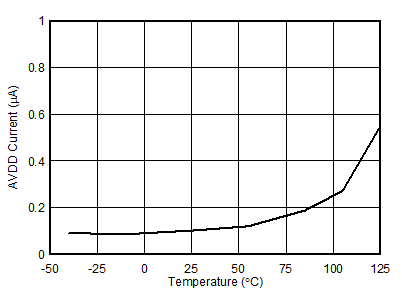
| Power-down mode |
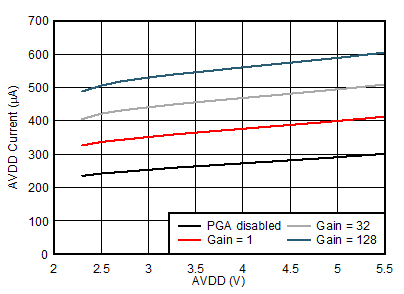
| Normal mode |
